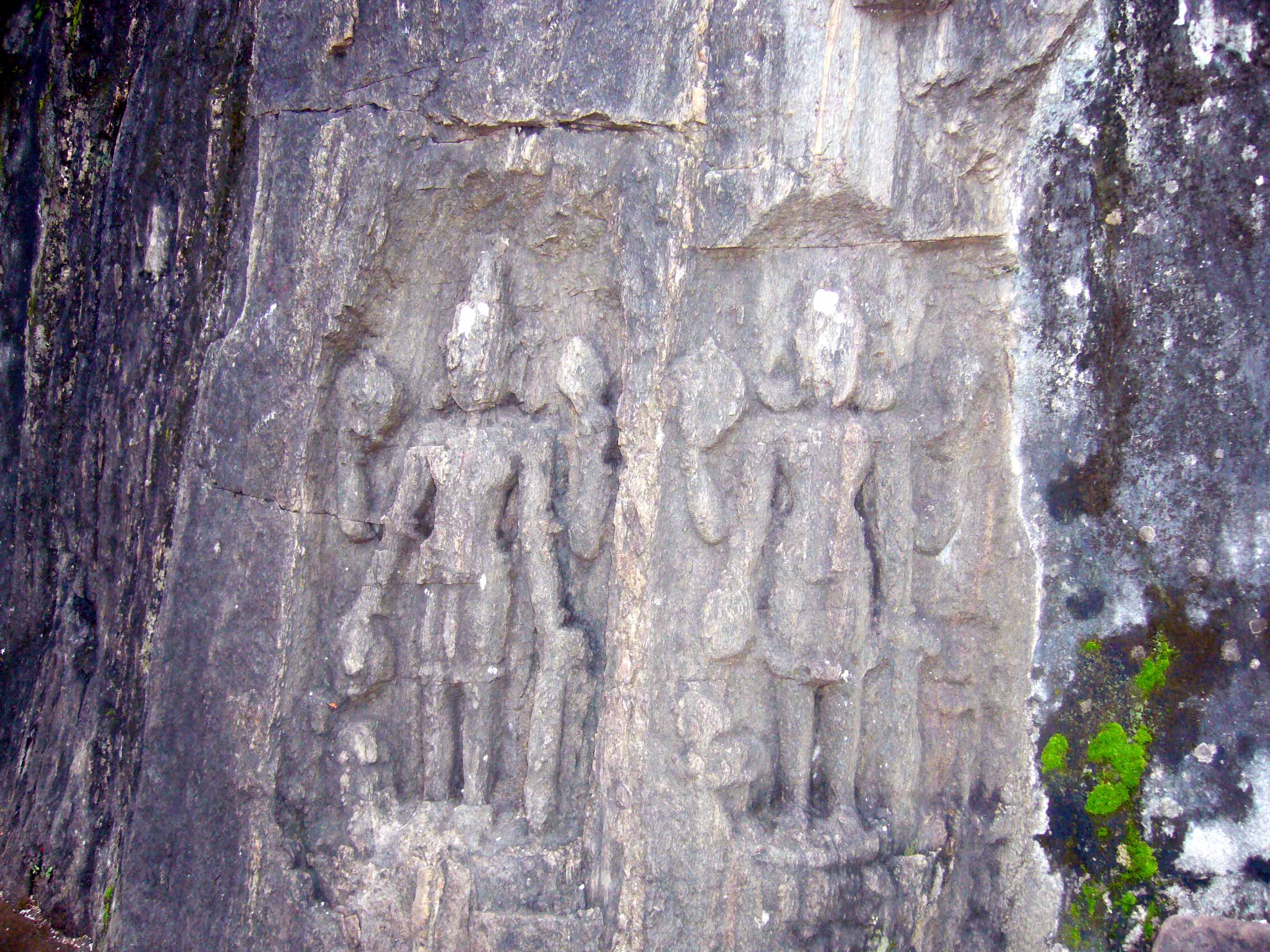According to the studies of Panda (2003:61-72), the sculptures are identified as Panduvamsi Raja Harshagupta and his Rani Vasata Devi on one of the previously mentioned four pillars. The sculpture depicts the picture of Rani Vasata Devi attending to her husband Raja Harshagupta in his deathbed in deep mourning. Conspicuously, Rani Vasata Devi is also believed to have built the original Narsinghnath temple for Lord Visnu. This attests the fact that the site of Narsinghnath bears the testimony of a place of Hindu worship and pilgrimage since at least the eighth century A.D.
In this context, mention may be made of one five feet high four-headed standing figure of Narasingha in Samabhanga posture found in a small temple of the Narsinghnath temple complex. Very unusually, the Sthanaka Yoga Narasingha image standing in Samabhanga posture is seen wearing shoes up to knee-level or high boot of the Iranian type, as seen in the legs of the Surya image of Konark, assigned to the thirteenth century A.D. (Panda, 1992:210; Panda, 2004:46-47).
It might be possible that the temple site of Narsinghnath was in the beginning a Buddhist one and the temple built over it by Rani Vasata Devi in eighth or ninth century A.D. was in a decaying state. This was repaired and renovated in eleventh century A.D. and was consequently repaired or renovated again by the first Chauhan Raja Ramai Dev in fourteenth century A.D. In the same way, it was in complete ruins in the fifteenth century and the fourth Chauhan Raja Vaijala Dev-I built a new temple on this site for the present Lord Narasingha Visnu.
Senapati and Sahu (1968:50) writes that possibly from the time of Raja Vaijala Dev-I and his Rani Durlabha Devi, the peaks containing the temples of Narasingha and Hari-Hara were correspondingly recognized as Narsinghnath and Harisankar. In view of this, Gandhagiri may be believed to be a foremost religious centre of Buddhism with international status between the second and eighth century A.D. For that reason, probably it was assimilated into Hindu fold i.e. Hinduism first through the stream of Tantrik Saivism and finally through the stream of Vaisnavism which will be dealt subsequently in our analysis (3).
Chitrasen Pasayat is an OAS comments on culture



